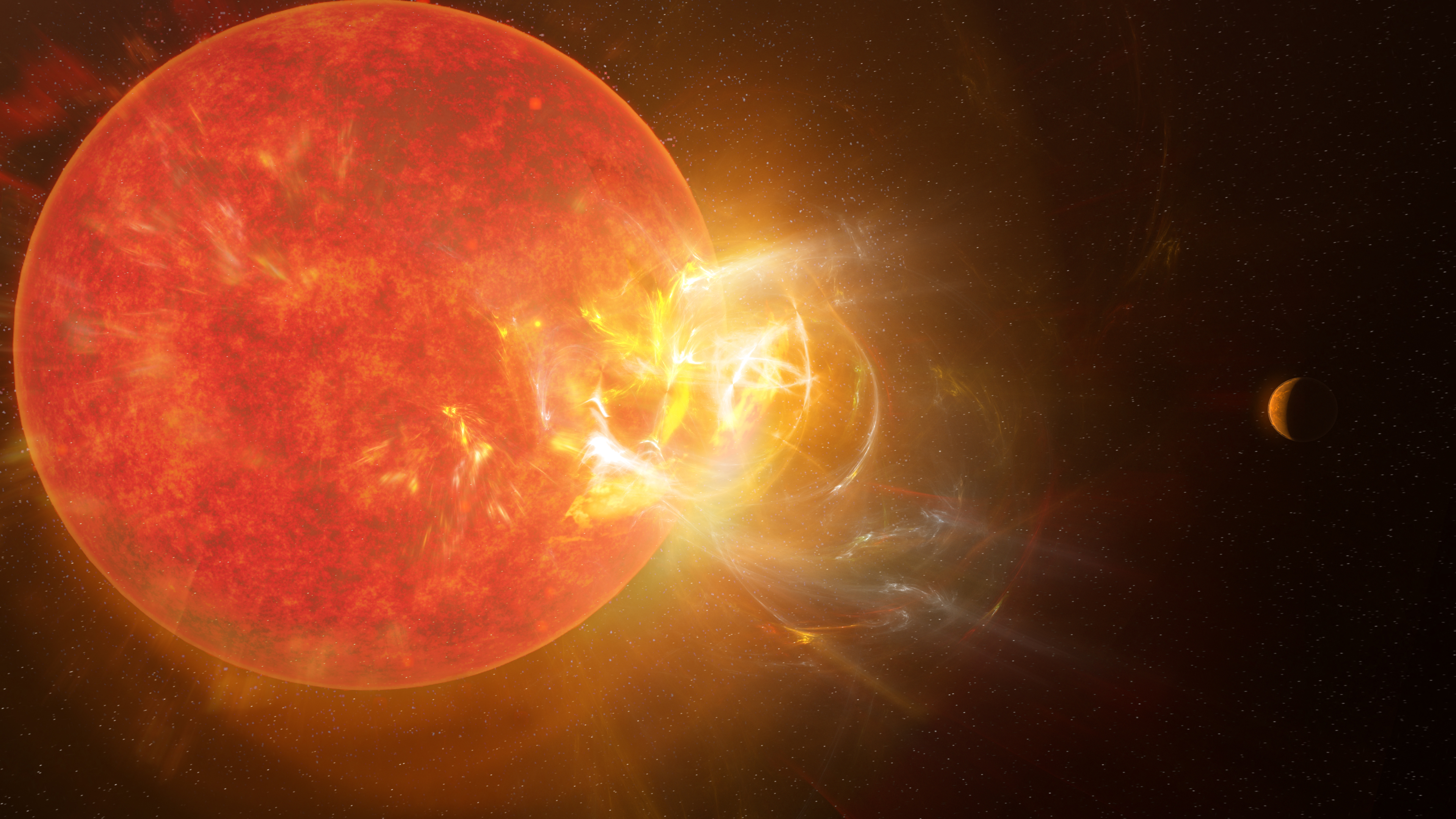
In the Alpha Centauri system, its smallest member – the red dwarf Proxima Centauri – has been spotted giving off a massive stellar flare, the likes of which we are alive to say the Sun hasn’t been observed to produce. In fact, this single flare was a hundred times more powerful than similar events produced by the Sun. It’s long been known that tiny red dwarf stars can have powerful flares, and this activity is part of why it’s hard to know if planets around red dwarfs can live for prolonged and continuous periods of time.
While reviewing archival data of Proxima Centauri in the Atacama Large Millimeter/submillimeter Array (ALMA) archive, researchers discovered that this nearest star to the Earth had a flare in 2018. In hopes of catching a second flare, the research team asked for and was awarded forty nights of observing time, spread over many months, on nine telescopes on and above the Earth. During this period, one second-second flare was observed, and, during this event, the star became 14,000 times brighter in many different colors of light, including both ultraviolet and radio.
The lead author of this work, Meredith MacGregor, points out: “Proxima Centauri’s planets are getting hit by something like this not once in a century, but at least once a day, if not several times a day. … If there was life on the planet nearest to Proxima Centauri, it would have to look very different than anything on Earth. A human being on this planet would have a bad time.
These results are published in the Astrophysical Journal Letters and have implications for everyone from stellar astronomers to astrobiologists. They also make me wish that the energy of solar flares was brighter in visible light. Imagine looking up and seeing a star get 10,000 times brighter for just a couple of seconds. If we could see it in radio or ultraviolet light, we’d see that. It might be a bit traumatizing like the sky was filled with lights on the fritz, so maybe it’s best that we actually don’t see that.
More Information
NRAO press release
Carnegie Science press release
“Discovery of an Extremely Short Duration Flare from Proxima Centauri Using Millimeter through Far-ultraviolet Observations,” Meredith A. MacGregor et al., 2021 April 21, The Astrophysical Journal Letters




 Join the Crew!
Join the Crew!
 Escape Velocity Space News
Escape Velocity Space News
0 Comments